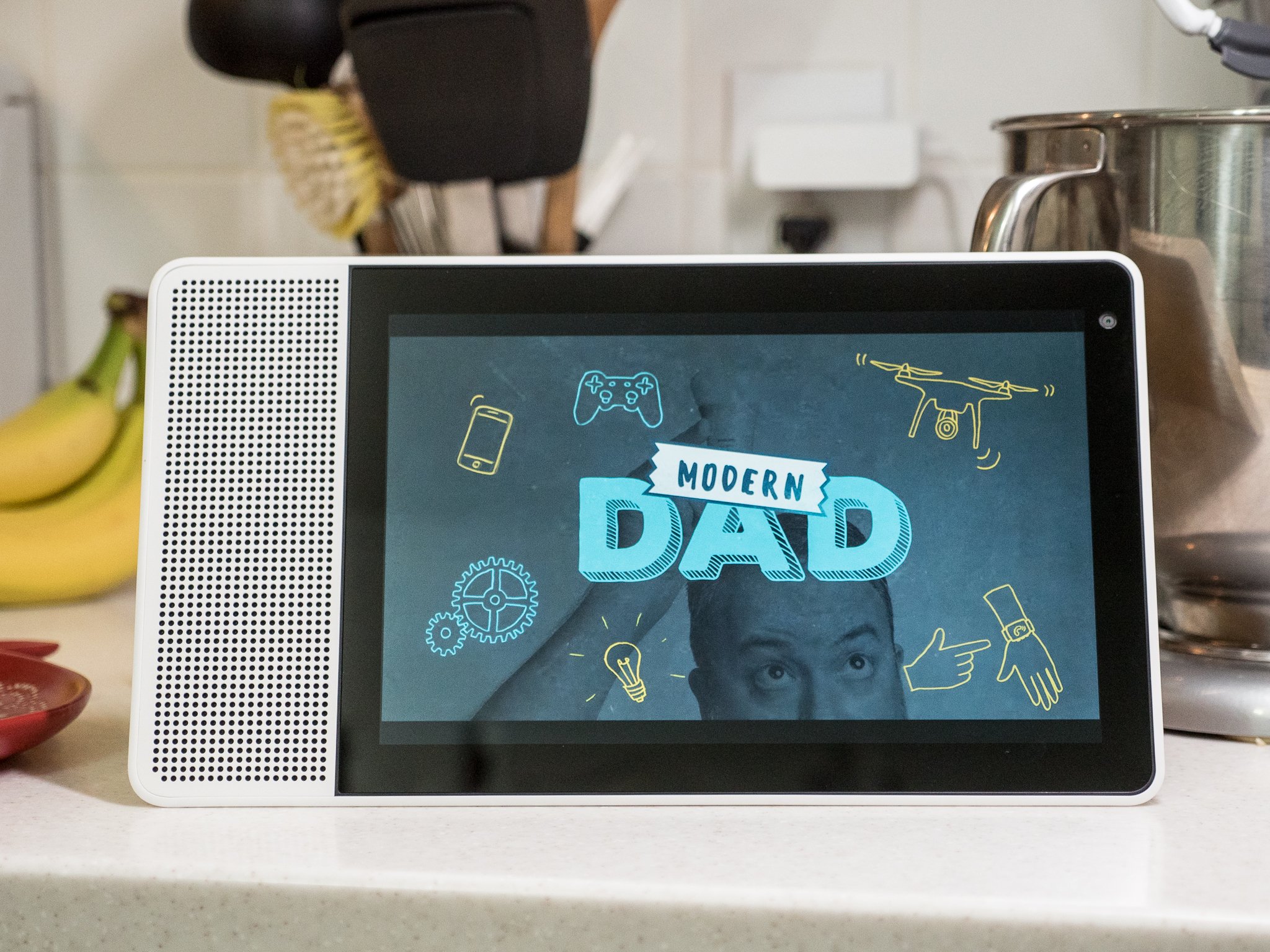
Smart assistants? Those are table stakes. Voice control? We've been doing that for what seems like years. (Though not nearly as long as you'd think.) The new hotness is pairing your voice-controlled with a touchscreen.
Amazon did it first with the Echo Show. It did a fairly decent job, and the 7-inch screen is a nice little portal for Amazon Prime Video, music, and even video calls using Alexa. But Amazon also found itself in a bit of a war with Google, resulting in YouTube not being available on the Echo Show. That's a huge, scorched crater of a hole.
Google is now filling that hole with its new Android Things line, and with Lenovo as one of its first partners in the smart display space. (LG and JBL also will have their own smart displays.) Android Things can be thought of as a lightweight version of Android. The unnecessary smartphone stuff is stripped out, and what's left behind is still surprisingly adept. It's not like you've got a tablet strapped to a speaker. Everything is more integrated than that. (Those of us of a certain age call this sort of thing an embedded OS.)
The point of all this is that Android Things is a portal for the power of Google's cloud-based products. Google Assistant is the star. And while the Google Home speakers gave it a voice, the Lenovo Smart Display gives it a face. And that's where things get really interesting.
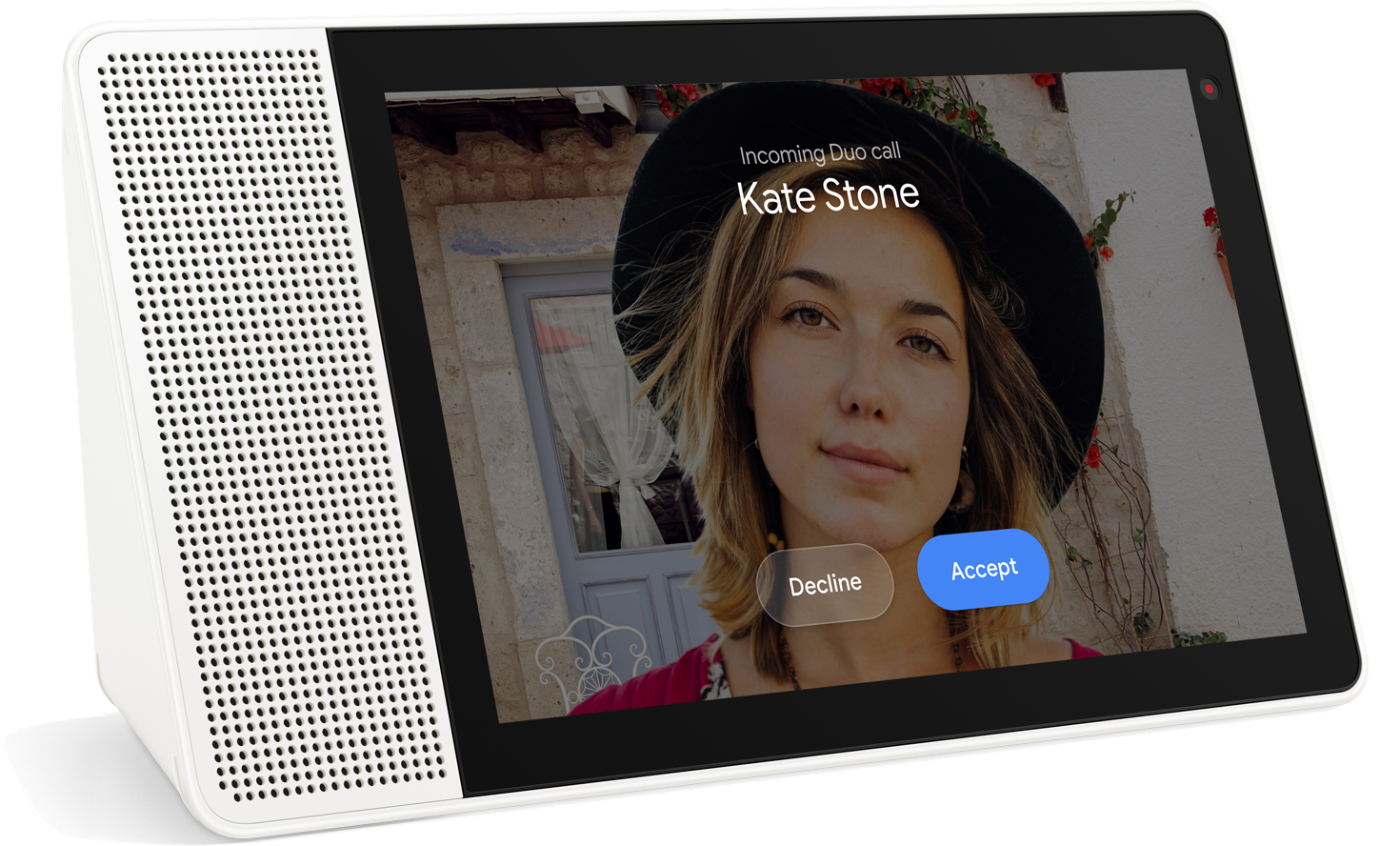
Price: $199/$249
Bottom line: Love Google Assistant and want it with a screen? This is a great first entry.
The Good
The Bad
Lenovo Smart Display Video Review
Subscribe to Modern Dad on YouTube!
More: Amazon Echo Show review
About this review
There are two versions of the Lenovo Smart Display — a 10-inch model, and an 8-inch model. Lenovo provided the larger of the two, which we've used for a week in various locations throughout the home.
It's all about Google Assistant
There's a good chance you know Google Assistant. If you use an Android phone or have picked up a Google Home, Google Home Mini, or Google Home Max, you know what it can do.
The latest updates, reviews and unmissable series to watch and more!
It answers questions. It gives directions. It tells you all about things, whether it's about yourself, or the world around you. It ties into your Google account to personalize the results. It can even make phone calls.
Google Assistant gets the full-screen treatment it so rightly deserves.
And for as good as it is — and it really is the best personal digital assistant you can have — it was lacking a screen. Amazon beat Google (and its partners) to that.
And having a screen adds a whole new dimension to Google Assistant. Now you don't just hear results. You see them. Whether it's pictures or directions or other information. It's a visual portal into the world at large.
Or, OK, it can be small things, too. You no longer have to guess how much time is left on a timer — you can just see it.
The screen also serves as a nice little digital photo frame. When you're not actively using it for things, it's got options for curated artwork, a couple of clock faces — or you can make your own album in Google Photos for display.
And this thing can make video calls. Well, it can make video calls over Google Duo. (And, in fact, that's the only thing the camera can be used for at the time of this review.) Duo's a perfectly good video calling app, and if you haven't tried it, you should. But it's also just one video calling app. There's currently no support for WhatsApp or Signal or Facebook Messenger or whatever else the kids are using these days. (And supporting Apple's FaceTime is, of course, out of the question.)
The rest of the hardware
The screen is the standout feature here, on either of the two models. Yes, there are two — an 8-inch model, and a 10-inch model. Here's how the specs break down:
| Header Cell - Column 0 | 8-inch | 10-inch |
|---|---|---|
| Row 0 - Cell 0 | Row 0 - Cell 1 | Row 0 - Cell 2 |
| Price | $199 | $249 |
| Display resolution | 1280 x 800 | 1920 x 1200 |
| Operating system | Android Things 1.0 | Android Things 1.0 |
| Processor | Snapdragon 624 | Snapdragon 624 |
| Storage | 4GB | 4GB |
| RAM | 2GB | 2GB |
| Speakers | 1.75-inch 10W | 2-inch 10W |
| Camera | 5MP wide-angle | 5MP wide-angle |
| Wifi | 802.11ac | 802.11ac |
| Bluetooth | BT 4.2 LE | BT 4.2 LE |
| Color | White/gray | White/bamboo |
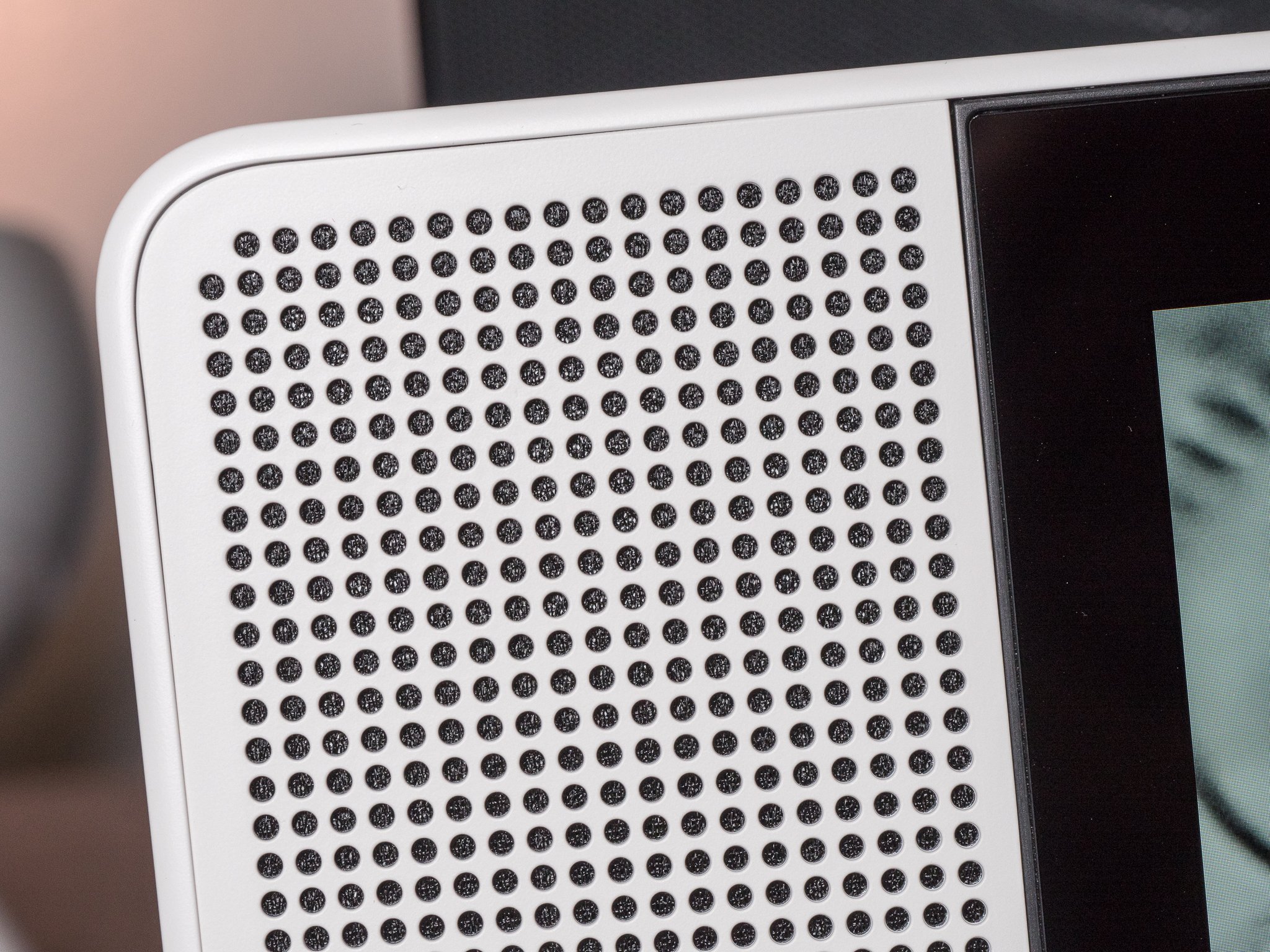
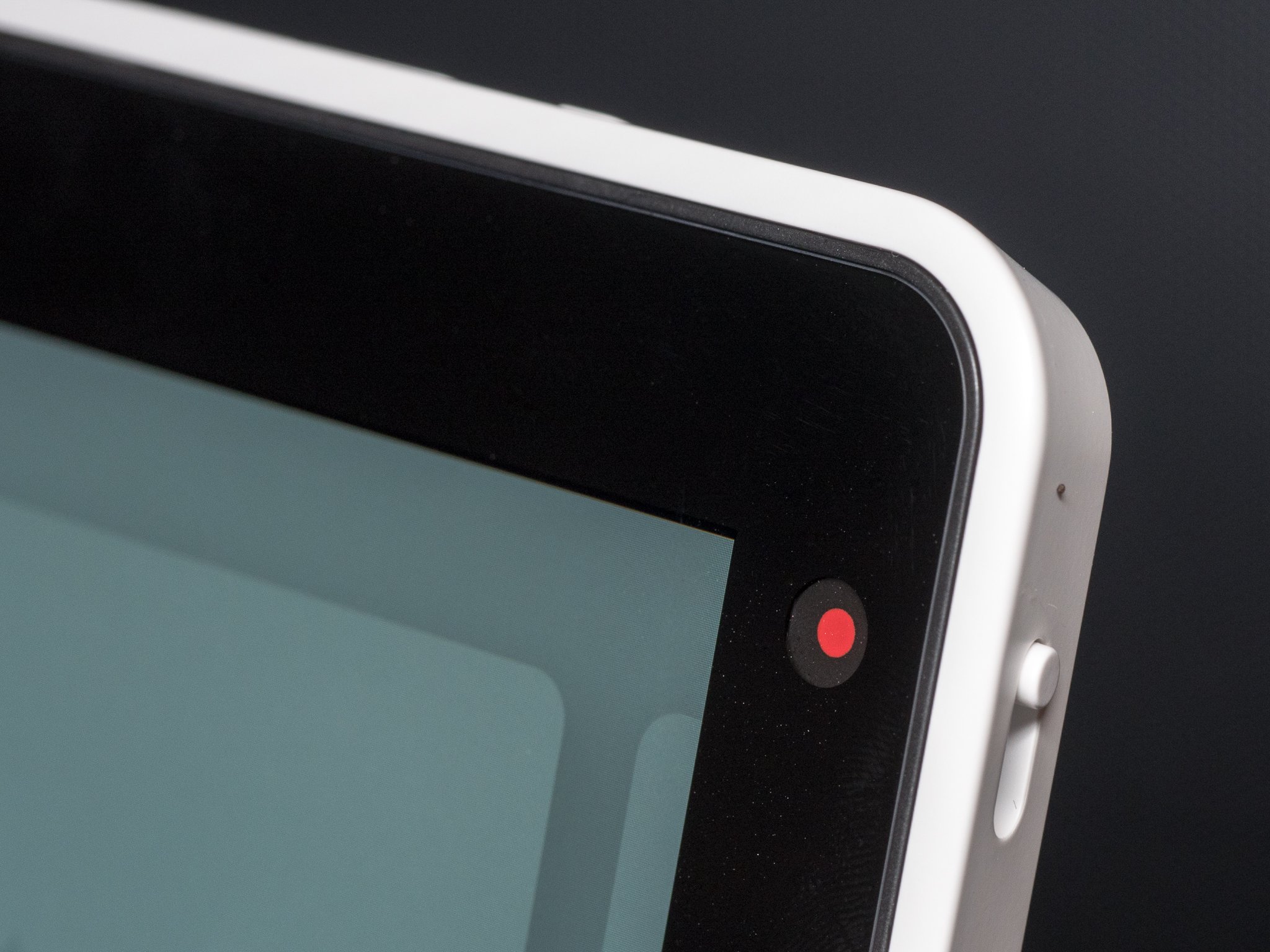
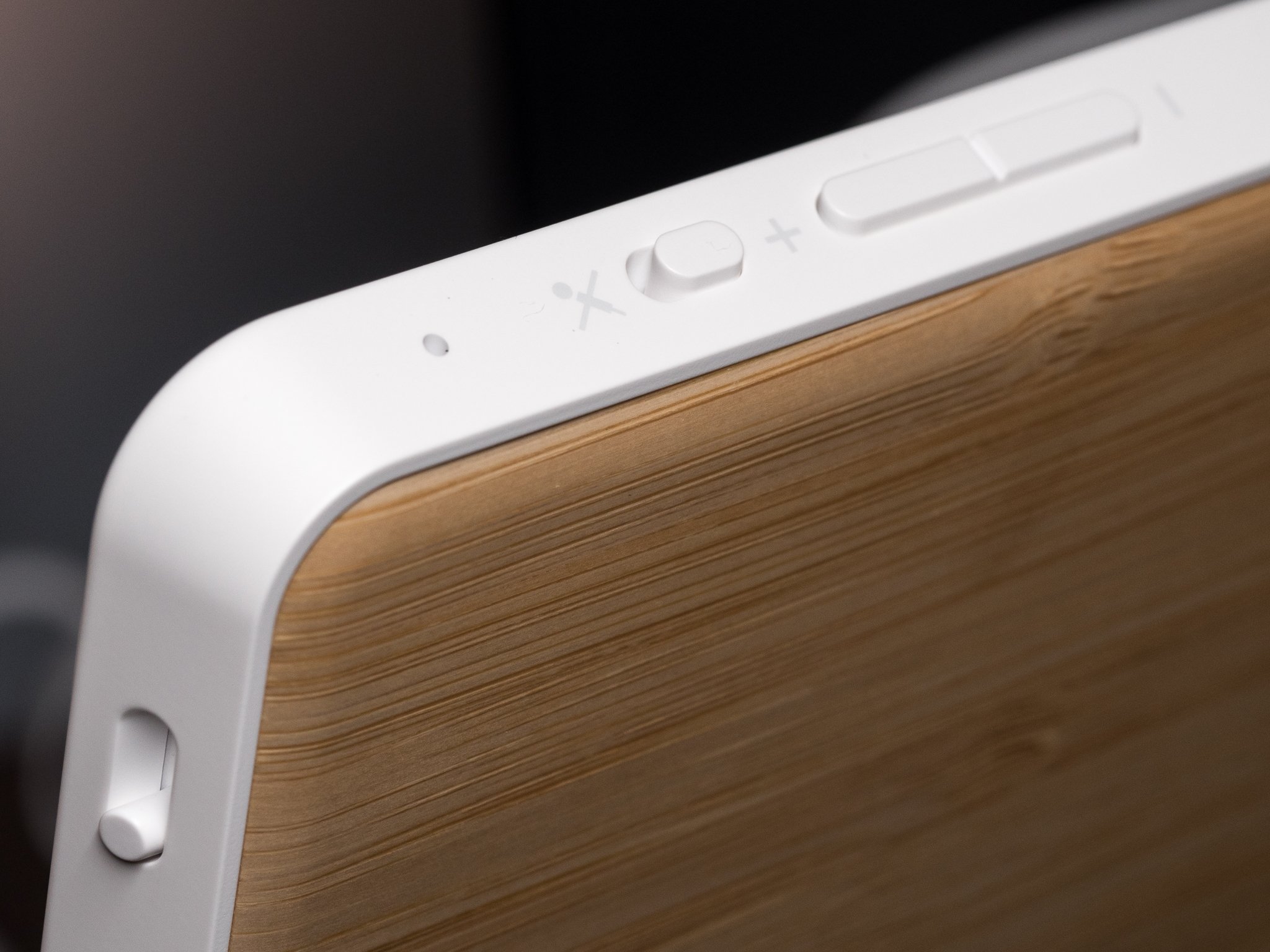
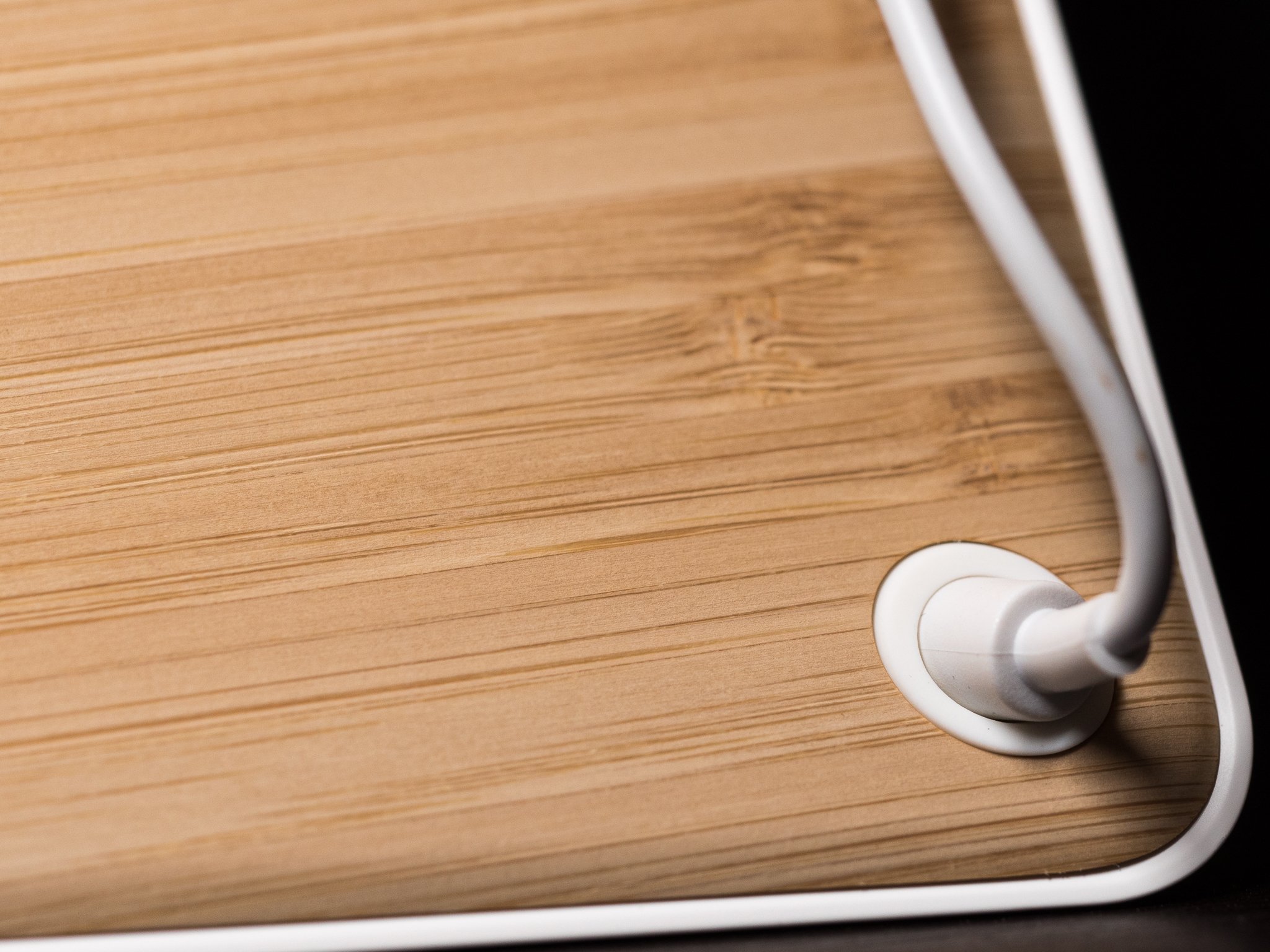
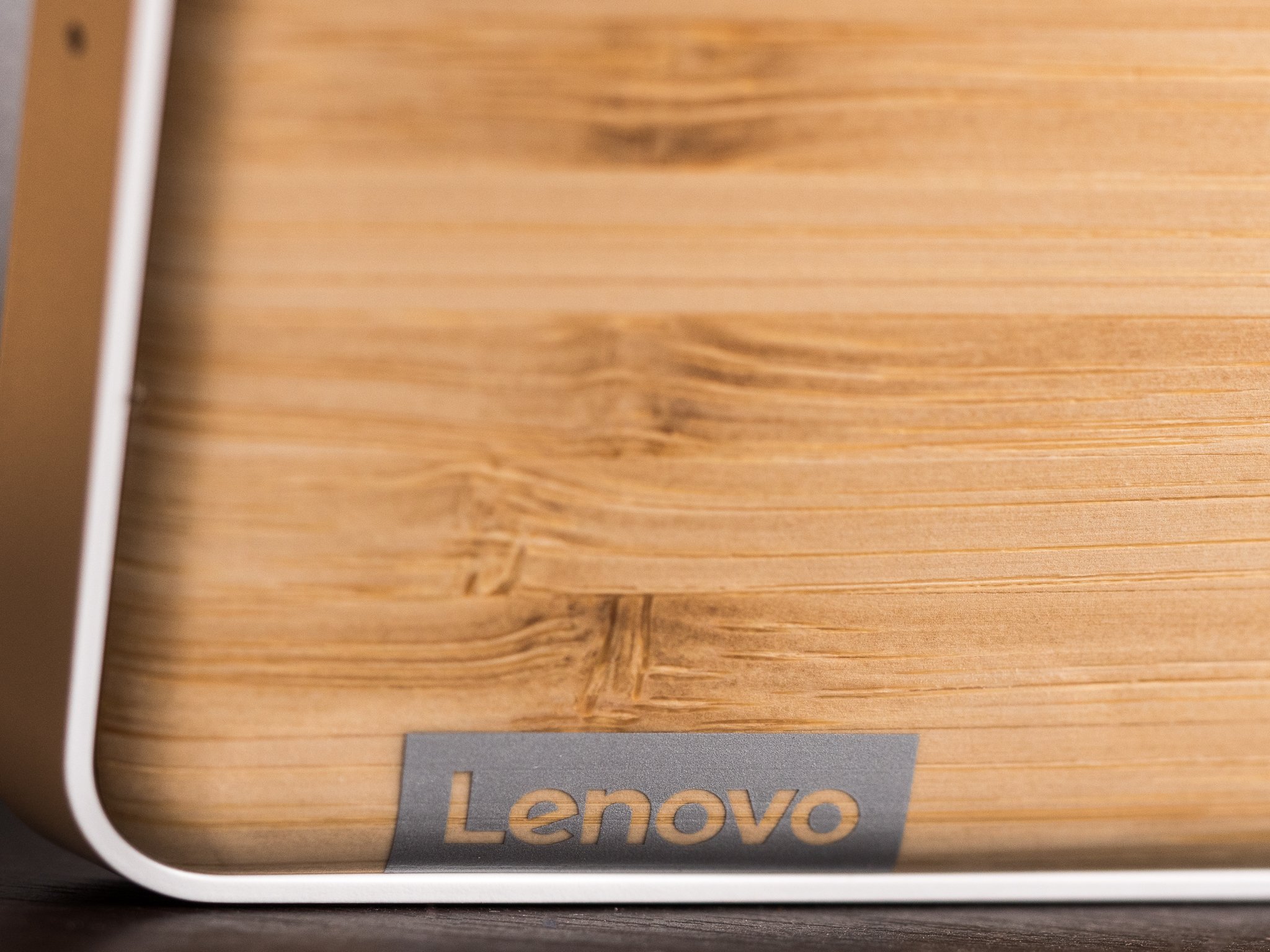
As noted, we've used the larger of the two Smart Display models. The only real differences between the two are the display — it's obviously larger on the 10-inch model and has a more dense pixel density, and so it looks better — the speaker, and the color.
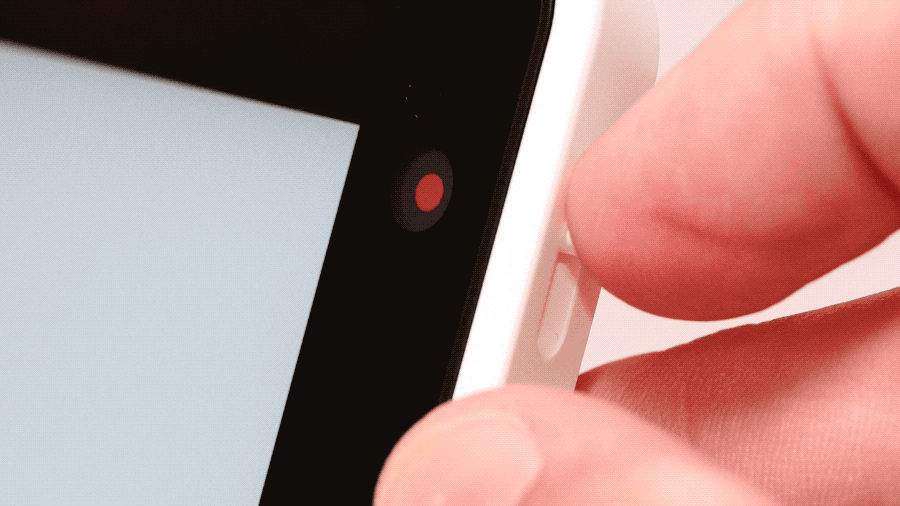
The speaker on the 10-inch model is fine. It's not great. It's the sort of thing we've come to expect from this sort of product. It's comparable to what you'll find in the OG Google Home, or the Amazon Echo Show. It's not stereo or anything, and it doesn't hold a candle to a single Sonos Play:1 or the Apple HomePod, for sure. But it gets the job one, and it's fine for casual listening. But if you really care about audio, you'll want something actually meant for audio.
The microphone array is competent, too. It does a decent job of hearing you while music is playing. And when a room is silent, it's got some remarkable range on it. (Almost annoyingly so at times.)
The rest of the hardware is pretty straightforward. There's a volume rocker next to a physical hardware switch to mute the microphone. And the camera has a physical shutter switch, too — as in it physically covers the camera lens when you want to make sure it can't see you. No other connected home product I've used has that, and it's the sort of thing that I'd love to see standard. (It's also very nicely done.)
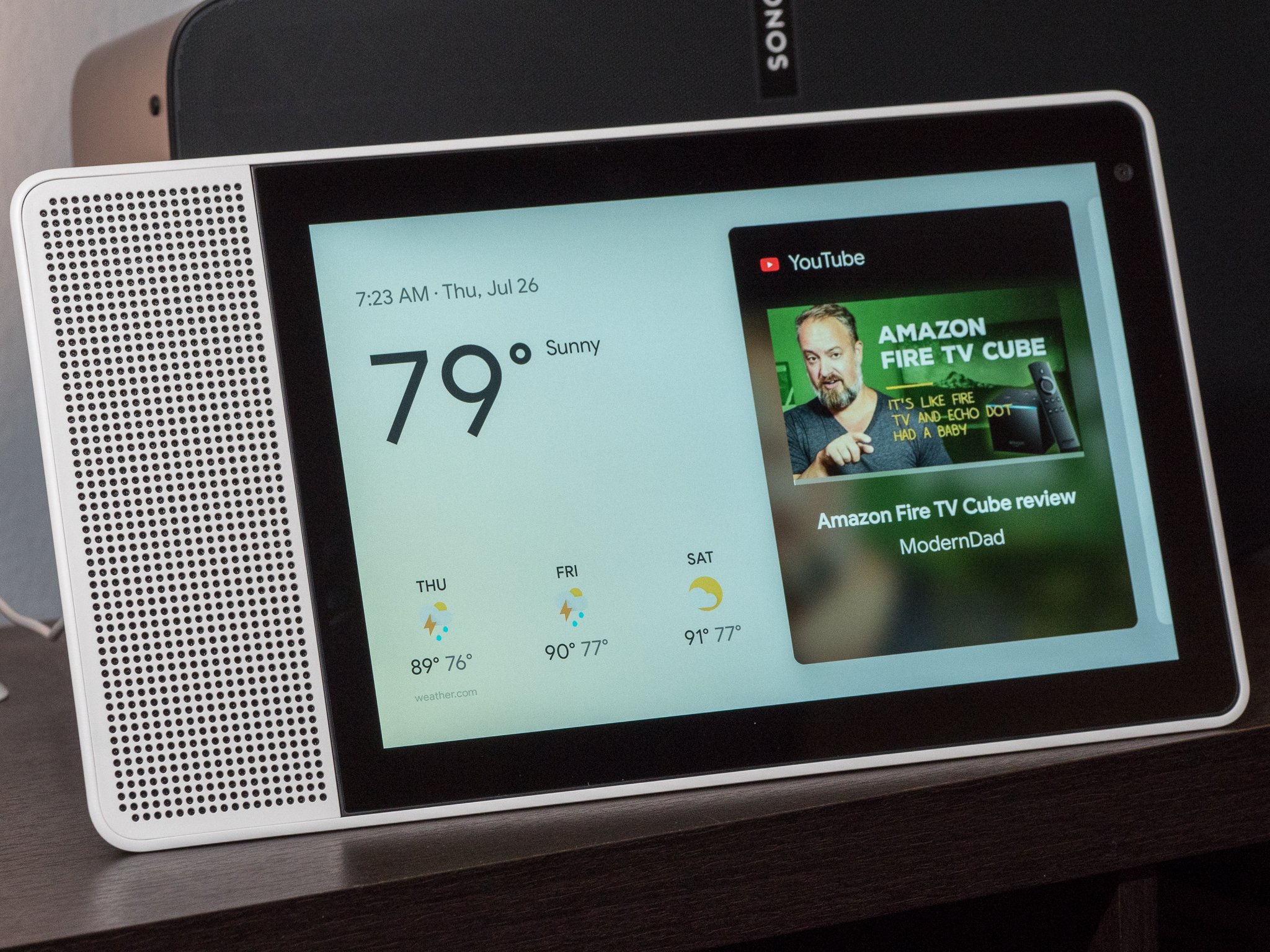
A fun secondary display for cord-cutters
This is CordCutters.com, so let's talk video. Being a device running Android Things, it of course has access to everything Google can throw at it. That means, yes, you can watch YouTube videos — and you only have to use your voice to access them. And you have the option in the setup process (you use the Google Home app on your phone) to link your accounts from HBO or CBS or Viki or Starz. (Note that Netflix is an option for linking within the Google Home app — so it'll work with things like Android TV — but not for Smart Display. Welcome to reviewer hell.)
But the Lenovo Smart Display also is a proper Chromecast target. And that means you can "cast" video to it from a phone or tablet or browser just about any time. OK, a lot of the time. Sometimes.
Google's video services stream just fine, but a good number of others have issues so far.
This actually is where we ran into some hiccups. Some third-party services work great. Some were broken. Others pretend the Smart Display doesn't exist.
YouTube TV, for example, works fine over Chromecast, and you can tell the Smart Display to launch a particular chanel with your voice. Netflix, however, doesn't even recognize the Smart Display as a Chromecast target. So that's out for now, and the company told us it didn't have anything to announce about whether it ever would be.
Other services are just kind of wonky right now — not overly unusual for a first-generation product, even though we're talking about Chromecast here, and it having just turned 5 years old most certainly is a mature protocol.
DirecTV Now attempts to use Chromecast, and manages to get the video onto the Smart Display. But there's no audio. Sling tries and fails to connect. (Even Google Photos fails the Chromecast test, though to be fair you can just tell the Smart Display to show your photos, and it'll work fine.) The point is, there are some early bugs here, and we have no doubt that they're being worked on. Or, at least the need to be worked on.
But if you're using a service that does play nice with Smart Display, it's a pretty cool secondary screen for cord-cutters — especially for the things that you can activate by voice. YouTube is big, of course, and live streaming TV is only growing. It's maybe not as flexible as sticking an iPad on the counter while you're cooking, but it's still a fun (and less expensive) option.
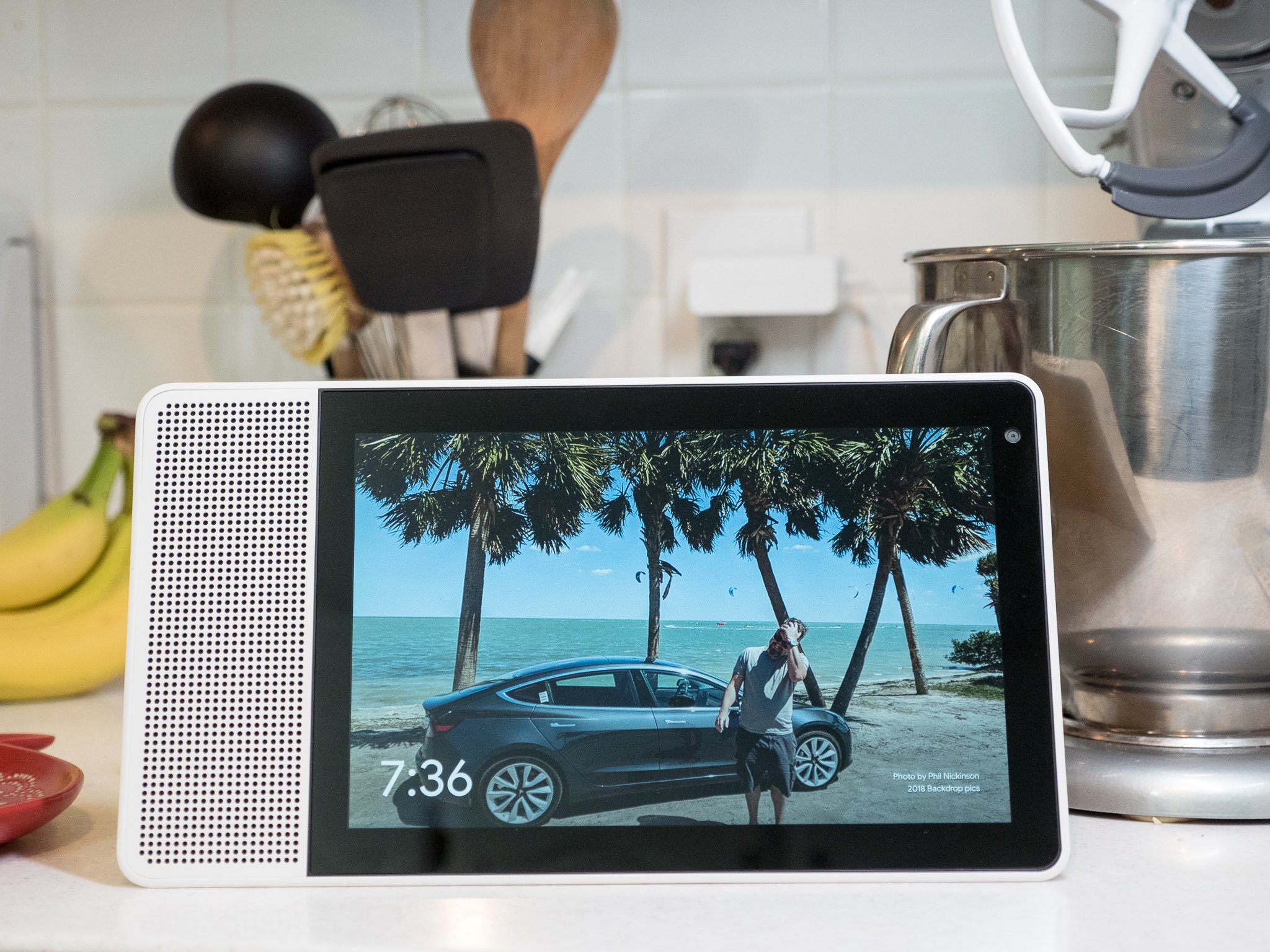
So should you buy it?
This is a fun little device. The 8-inch model at $199 isn't inexpensive, but it's also about what you'd expect to pay for this sort of thing. (And at an $80 premium over the original Google Home, it's not a bad deal.) The larger model takes things up to $249 and is less of an impulse purchase — but you get a better product.
Don't buy this just yet thinking it's going to be the be-all, end-all for cord-cutters. At least not until some of the streaming wonk gets worked out. (And I think it will.) And it's still not the ultimate home hub that I'd been dreaming of. It can still use a little work on that front. (Show me my video doorbell feed when someone rings it, please!)
But if you look at the Lenovo Smart Display as an even better Google Home, with a camera and a display, it's a really good connected home purchase — and it's one that's almost certainly going to improve over time.

